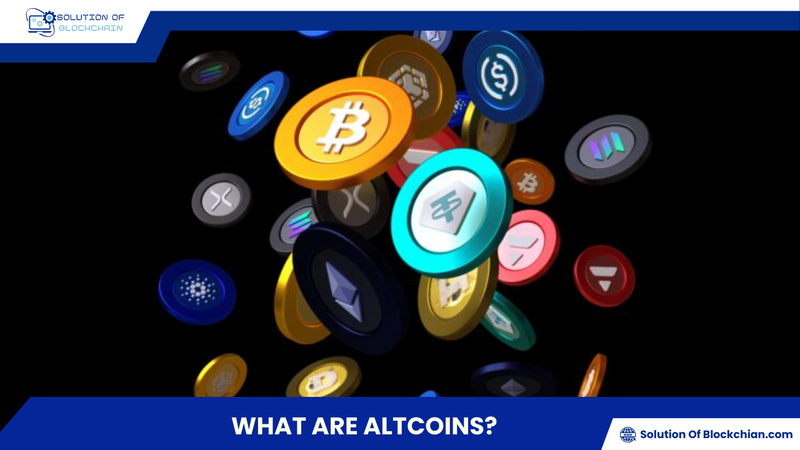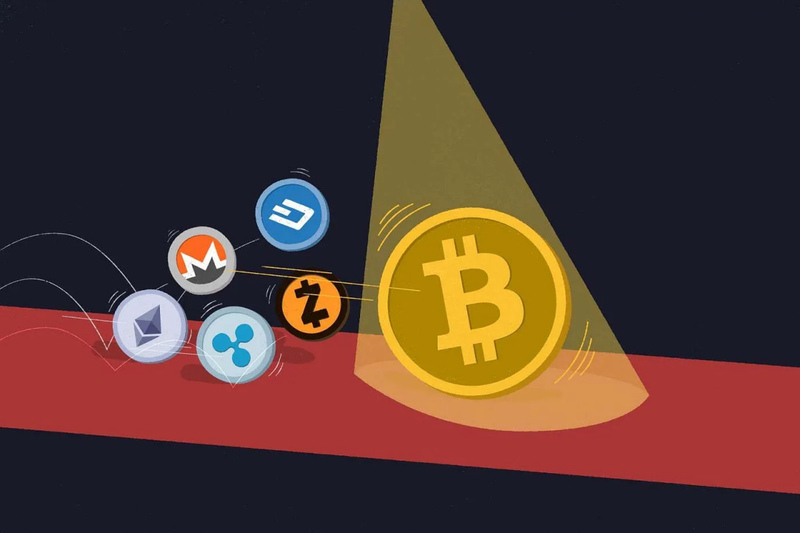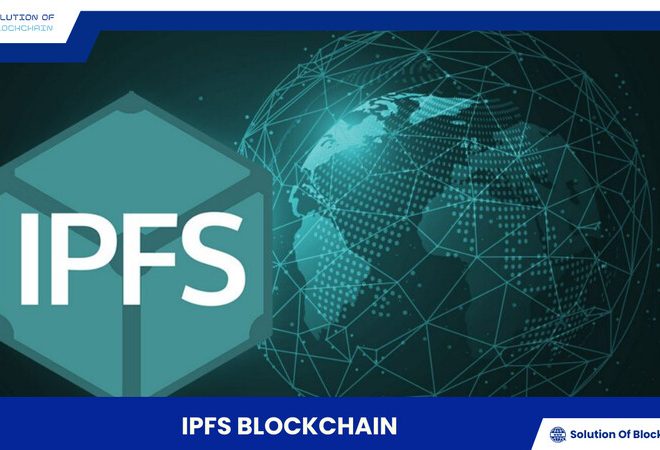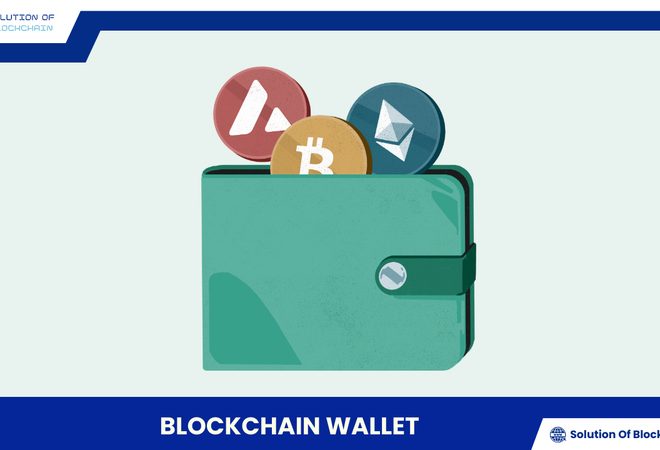
What are Altcoins? Popular Altcoins
Today’s cryptocurrency market is a colorful tapestry with thousands of digital currencies. Among them, besides the “king” Bitcoin, there are countless “alternative coins” called Altcoins. So what are Altcoins? What are their outstanding characteristics, and what investment opportunities do they offer?
What are Altcoins?
Altcoin, short for “alternative coin,” is simply any cryptocurrency that is not Bitcoin. Born after Bitcoin, Altcoins are built on blockchain technology but with distinct improvements and goals.
If Bitcoin pioneered the era of cryptocurrency, then Altcoins are subsequent efforts to improve and diversify this market. From Ethereum with smart contracts that enable the creation of decentralized applications (DApps), to Litecoin with faster transaction speeds, each Altcoin brings unique values, contributing to the vibrancy and enormous potential of the crypto world.
History and development of Altcoins
The development journey of Altcoins can be divided into the following main stages:
- Early stage (2011-2014): The first Altcoins like Namecoin and Litecoin were born, mainly focusing on improving transaction speed and algorithms compared to Bitcoin.
- Boom stage (2015-2017): Ethereum emerged with smart contract technology, ushering in a new era for decentralized applications (DApps). A series of Altcoins were born with diverse purposes, from stablecoins (Tether) to tokens serving ICOs (Initial Coin Offerings).
- Adjustment stage (2018-2020): The Altcoin market experienced a sharp decline after the ICO bubble. However, this was also a time for potential projects to consolidate technology and develop communities.
- Growth stage (2021-present): The explosion of DeFi, NFTs, and the Metaverse has driven the development of related Altcoins. The market has witnessed the rise of new blockchain platforms such as Solana, Avalanche, and Polkadot.
Common types of Altcoins
The Altcoin market is extremely diverse with thousands of different cryptocurrencies. Based on their purpose and features, Altcoins can be classified into the following main groups:
Stablecoins
Definition: Stablecoins are Altcoins designed to maintain a stable value by pegging to another asset, usually fiat currency like USD, or a commodity like gold.
Purpose: Stablecoins are mainly used for payment, trading, lending, and borrowing activities in the cryptocurrency market. Price stability makes stablecoins a reliable medium of exchange, minimizing the price volatility risks commonly seen in other cryptocurrencies.
Examples:
- Tether (USDT): The most popular stablecoin today, pegged to the value of USD at a 1:1 ratio.
- USD Coin (USDC): Another USD-backed stablecoin issued by Circle and Coinbase.
- Dai (DAI): A decentralized stablecoin collateralized by other digital assets on the Ethereum blockchain.
DeFi tokens
Definition: DeFi tokens are tokens used in decentralized finance (DeFi) applications. DeFi is an ecosystem of financial applications built on blockchain, allowing users to perform financial activities without intermediaries like banks.
Purpose: DeFi tokens have various functions in the DeFi ecosystem, including:
- Governance: Users can use DeFi tokens to participate in DeFi protocol governance, voting on changes and upgrades.
- Payment: Used to pay transaction fees on DeFi platforms.
- Collateral: Used as collateral to borrow or lend other digital assets.
- Liquidity mining: Providing liquidity for decentralized exchanges (DEXs) and earning rewards.
Examples:
- UNI (Uniswap): Governance token of the decentralized exchange Uniswap.
- AAVE (Aave): Token of the Aave lending and borrowing protocol.
- COMP (Compound): Token of the Compound Finance protocol, allowing users to earn interest by depositing cryptocurrencies.
Meme coins
Definition: Meme coins are Altcoins born from trends, memes, or jokes on social media. They often have no clear practical application, and their value mainly comes from community interest.
Characteristics: Meme coins often have huge price fluctuations, posing high risks but also potentially bringing huge profits in a short time.
Examples:
- Dogecoin (DOGE): The most popular meme coin, initially created as a joke but later gained community attention and reached a market capitalization of billions of USD.
- Shiba Inu (SHIB): A meme coin inspired by Dogecoin, also with a large community of supporters.
Utility tokens
Definition: Utility tokens are Altcoins that provide users with access to the services or products of a specific platform or project.
Purpose: Utility tokens can be used to:
- Payment: Pay transaction fees, purchase products or services on the platform.
- Receive benefits: Get discounts, rewards, or special access.
- Participate in governance: Vote on important project decisions.
Examples:
- BNB (Binance): Token of the Binance exchange, used to pay transaction fees, participate in IEOs, and many other activities on the exchange.
- CRO (Crypto.com): Token of the Crypto.com platform, offering many benefits to users such as cashback, Visa cards, staking, etc.
Privacy coins
Definition: Privacy coins are Altcoins designed to protect user privacy and anonymity in transactions.
Technology: Privacy coins use special encryption techniques to hide information about senders, recipients, and transaction amounts.
Examples:
- Monero (XMR): One of the most popular privacy coins, using Ring Signatures and Stealth Addresses technology to anonymize transactions.
- Zcash (ZEC): Privacy coin using zk-SNARKs technology to protect transaction information.
In addition to the common types of Altcoins above, there are many other Altcoins with distinct purposes and features, contributing to the diversity and richness of the cryptocurrency market.
Key features of Altcoins
Diverse technology
Not limited to the Proof-of-Work (PoW) algorithm like Bitcoin, Altcoins exploit various blockchain technologies, each with its own advantages and disadvantages, to optimize speed, cost, and scalability:
- Proof-of-Stake (PoS): More energy-efficient than PoW, users “stake” coins to participate in transaction validation and receive rewards. Examples: Ethereum (after The Merge), Cardano.
- Delegated Proof-of-Stake (DPoS): Increases transaction processing speed, users elect delegates to validate transactions. Examples: EOS, Tron.
- Directed Acyclic Graph (DAG): Does not use blocks, transactions are confirmed directly, increasing scalability. Examples: IOTA, Nano.
Rich features
Altcoins are designed with many outstanding features, meeting the diverse needs of the market:
- Smart Contracts: Allow automatic, transparent, and secure execution of agreements, opening the door for DeFi, DApps, NFTs, etc. Examples: Ethereum, Solana.
- Decentralized Governance: The user community has the right to participate in project decision-making through voting. Examples: MakerDAO, Uniswap.
- NFT creation and trading: Many Altcoins support the creation and trading of NFTs (Non-Fungible Tokens), opening up a market for unique digital assets. Examples: Ethereum, Solana, Flow.
Diverse goals
Not merely a means of payment, Altcoins are created with various goals:
- Improving Bitcoin’s limitations: Many Altcoins were born to overcome Bitcoin’s limitations in transaction speed, cost, scalability, etc.
- Serving specific needs: Supporting areas such as DeFi, NFTs, Metaverse, Web3, etc.
Community
Most Altcoin projects have large communities of users and developers, actively contributing to the development and improvement of the project.
Growth potential
The Altcoin market is always dynamic with the emergence of new projects and constant improvements. This brings many attractive investment opportunities for pioneers.
Advantages and disadvantages of Altcoins
Advantages of Altcoins
- Improving Bitcoin’s limitations: Many Altcoins are designed to overcome Bitcoin’s limitations, such as slow transaction speed, high cost, and limited scalability.
- Portfolio diversification: Investing in Altcoins helps investors diversify their portfolio, minimizing risks when the market fluctuates.
- High growth potential: Some Altcoins have the potential to outperform Bitcoin, bringing attractive profits to investors.
- Supporting new applications and technologies: Altcoins are the foundation for many new applications and technologies, such as DeFi, NFTs, Metaverse, etc.
Disadvantages of Altcoins
- High risk: The Altcoin market is highly volatile, with a high risk of capital loss. The risk of scams is also more prevalent than with Bitcoin.
- Low liquidity: Some Altcoins have low trading volume, making buying and selling difficult.
- Technology dependence: The value of Altcoins depends on the development of technology and practical applicability.
- Incomplete legal framework: The lack of clear regulations creates instability in the Altcoin market.
Altcoins vs. Bitcoin
Although both are cryptocurrencies operating on blockchain platforms, Altcoins and Bitcoin have important differences to note:
Origin and purpose
- Bitcoin was born in 2009, as the first cryptocurrency in the world, with the initial goal of becoming a decentralized payment system, replacing the traditional financial system.
- Altcoins appeared later, with more diverse purposes, from improving Bitcoin’s limitations to serving specific needs such as DeFi, NFTs, Metaverse…
Technology
- Bitcoin uses the Proof-of-Work (PoW) algorithm to validate transactions and create new blocks. This is an energy-intensive mechanism and can lead to network congestion.
- Altcoins apply different technologies, including Proof-of-Stake (PoS), Delegated Proof-of-Stake (DPoS), Directed Acyclic Graph (DAG)… to increase transaction speed, reduce costs, and save energy.
Features
- Bitcoin mainly focuses on payment and value storage functions.
- Altcoins, with their technological diversity, offer richer features, such as smart contracts (Ethereum), NFT creation and trading (Solana), decentralized governance (Decentraland)…
Transaction speed and cost
- Bitcoin often has slow transaction speeds and high costs due to network overload.
- Altcoins are designed to address this issue, providing faster transaction speeds and lower costs, suitable for small and frequent transactions.
Scalability
- Bitcoin has limited scalability, making it difficult to meet the increasing transaction demand of the market.
- Altcoins, with more advanced technology, have better scalability, able to handle large transaction volumes without affecting performance.
Market capitalization
- Bitcoin currently has the largest market capitalization in the crypto world, dominating all Altcoins combined.
- However, some potential Altcoins are gradually narrowing this gap, demonstrating their attractiveness and significant growth potential.
Factors affecting Altcoin prices
Altcoin prices are affected by a complex network of intertwined factors. Understanding these factors will help investors have a more comprehensive view of the market, thereby making informed investment decisions.
- Supply and demand: This is an immutable law of the market. When demand for an Altcoin is high while supply is limited, its price will increase. Conversely, when supply is abundant and demand is low, the price will decrease.
- Market capitalization: Market capitalization reflects the size and value of an Altcoin. Altcoins with large capitalization tend to have higher liquidity, less volatility, and are considered more stable than those with small capitalization.
- Investor psychology: The cryptocurrency market is very sensitive to crowd psychology. Optimism and confidence in the market will drive Altcoin prices up. Conversely, fear and pessimism can lead to a sell-off and a sharp price decline.
- Security and safety: Altcoin projects with a solid technological foundation, high security, and less vulnerability to attacks will attract investor interest and be valued higher.
- Scalability: Scalability is an important factor determining the success of an Altcoin. Blockchains capable of handling large transaction volumes with fast speed and low cost will attract users and drive the value of Altcoins up.
- Applicability: Altcoins with real-world applications, solving specific problems and having future development potential, will be valued higher.
- Legal regulations: Government policies and regulations on cryptocurrencies have a major impact on the Altcoin market. Supportive regulations that create favorable conditions will promote market development, while restrictive regulations can hinder growth.
- Events and news: Events related to Altcoins (e.g., network upgrades, new partnerships) can affect prices.
Guide to effective Altcoin investing for beginners
Determine your investment goals
- Investment timeframe: Short-term (trading) or long-term (holding)?
- Risk tolerance: High or low?
- Profit target: How much do you want to achieve?
Choose potential Altcoins
- Fundamental analysis: Research the technology, development team, applicability, community, whitepaper…
- Technical analysis: Use technical analysis tools to predict price trends.
Risk management
- Do not invest beyond your financial capacity.
- Allocate investment capital to multiple Altcoins.
- Set stop-loss orders to limit losses.
- Develop a clear investment strategy and adhere to discipline.
Choose a reputable exchange
- Prioritize reputable exchanges with high security, reasonable transaction fees, good customer support, and a user-friendly interface.
Monitor and update market information
- Regularly update news, events, and policies related to Altcoins.
- Join forums and community groups to exchange information.
- Use portfolio tracking tools, price charts…
Some potential Altcoins in the current market
The Altcoin market is always evolving with the emergence of new projects. Here are some potential Altcoins you can consider in 2024:
Ethereum (ETH)
- Still the second largest blockchain platform in the world, Ethereum continues to maintain its leading position in the field of smart contracts and DApps.
- The transition to the Proof-of-Stake (PoS) consensus mechanism has significantly improved scalability and reduced energy consumption, opening up new development opportunities for Ethereum in the future.
- Ethereum remains the largest DeFi platform today, with a diverse ecosystem and enormous application potential.
Cardano (ADA)
- Cardano is a blockchain platform focused on security and scalability, using the Proof-of-Stake (PoS) consensus mechanism.
- With the continuous development of the DeFi and NFT ecosystem, Cardano is expected to attract more users and investors in the coming time.
- Cardano also focuses on applying blockchain technology to the real world, especially in developing countries.
Solana (SOL)
- Solana stands out with its extremely fast transaction processing speed and low cost, making it a formidable competitor in DeFi, NFTs, and GameFi.
- With the support of many large investment funds and a strong development community, Solana is predicted to continue to grow strongly in 2024.
Polkadot (DOT)
- Polkadot is a blockchain network that allows different blockchains to connect and exchange data with each other, creating an interconnected and diverse blockchain ecosystem.
- With high interoperability and wide application potential, Polkadot is considered one of the most potential blockchain platforms for Web 3.0.
Avalanche (AVAX)
- Avalanche is a highly scalable smart contract platform with fast transaction processing speed.
- Avalanche supports the creation of custom subnets, allowing projects to build their own blockchains with specific rules and requirements.
- With the development of the DeFi and NFT ecosystem on Avalanche, AVAX is expected to have a promising 2024.
Cosmos (ATOM)
- Cosmos aims to build the “Internet of Blockchains”, allowing different blockchains to communicate and exchange value with each other easily.
- Cosmos SDK provides developers with a powerful set of tools to build their own blockchains, promoting the development of a diverse blockchain ecosystem.
Note: These are just some potential Altcoins, not investment advice. You need to do thorough research before making any investment decisions.
Altcoins are an integral part of the cryptocurrency market, bringing diversity, attractive investment opportunities, and promoting the development of blockchain technology. However, investing in Altcoins also carries many risks.
To succeed in this market, investors need to equip themselves with solid knowledge, clearly define goals, manage risks effectively, and always update market information.
Hopefully, this article from Solution Of Blockchain has helped you better understand what Altcoins are before deciding to invest in them. Wish you success!







